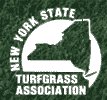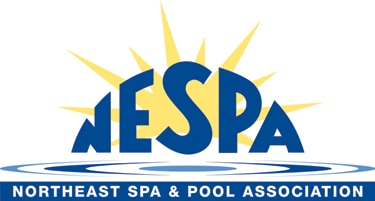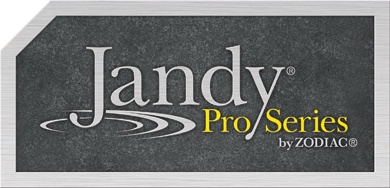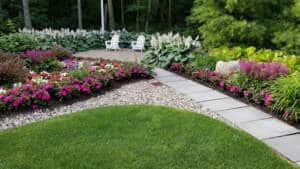 While there are no statewide mandatory water use restrictions in place now, the U.S. Drought Monitor cites abnormally dry conditions in some parts of New York and Connecticut. We always want to be wise with water use to conserve this natural resource. But, let’s face it, when our lawns begin to brown out in July and look more like straw than lush grass, we miss the curb appeal we once had.
While there are no statewide mandatory water use restrictions in place now, the U.S. Drought Monitor cites abnormally dry conditions in some parts of New York and Connecticut. We always want to be wise with water use to conserve this natural resource. But, let’s face it, when our lawns begin to brown out in July and look more like straw than lush grass, we miss the curb appeal we once had.
Can you conserve water and maintain a green lawn during the hottest, driest days of summer?
Yes, you can have it both ways.
The key is to implement irrigation best practices, assure that technology is up to date so you are watering efficiently, and manage turf health so your lawn can fully utilize water. But we realize, handling these tasks on your own can be overwhelming, and there’s a careful balance to strike when giving your grass enough water to sustain it through the “dog days.” Here is what our certified landscape professionals and licensed irrigation technicians recommend.
Water at Prime Time
When irrigation systems or sprinklers run after dark, excess moisture sits on the grass surface and creates conditions that are perfect for disease. Irrigation timers should be set to water grass before 10 a.m., when temperatures tend to be lower. That way, water can soak into the soil. As the day wears on, hot sun can evaporate water before it has a chance to reach the grass roots. By irrigating at the right time of day, you can conserve water while giving your lawn the water it needs to prevent dormancy (when it goes brown).
Shoot for ‘Deep Water’
 Established lawns usually need 1 to 1½ inches of water per week from rain or an irrigation system/sprinkler. Kentucky bluegrass, the most common type of turf in New York and Connecticut, can require up to 2 inches of water every week during summer. Keep in mind, when you water lightly and frequently, moisture tends to not penetrate the soil—so your grass roots never get the drink they need. What happens is, your roots do not grow deep into the soil, which is how your grass can survive dry periods and droughts.
Established lawns usually need 1 to 1½ inches of water per week from rain or an irrigation system/sprinkler. Kentucky bluegrass, the most common type of turf in New York and Connecticut, can require up to 2 inches of water every week during summer. Keep in mind, when you water lightly and frequently, moisture tends to not penetrate the soil—so your grass roots never get the drink they need. What happens is, your roots do not grow deep into the soil, which is how your grass can survive dry periods and droughts.
Instead, shallow-rooted grass will demand more water, yet it will lack the resiliency and healthy look you desire. So, you’ll get brown areas and an overall weak lawn that doesn’t stand up to weather extremes. You’ll also spend more money fixing problems, such as reseeding areas or digging up dead turf to replace with sod.
The good news is, a properly calibrated irrigation system with a weather station will activate at the right time based on rainfall and soil conditions, taking the guesswork out of when and how much to water your lawn.
Assess Your Irrigation System
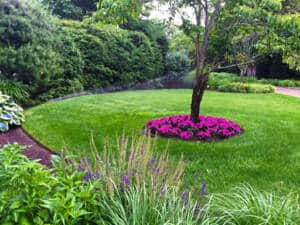 An irrigation audit and assessment will tell stories about whether your sprinkler system is working efficiently—and whether there are leaks, breaks or zones that simply need attention. What happens during an irrigation audit? First, a licensed irrigation technician will perform a thorough diagnostic, examining each component. We measure the efficiency of every zone to be sure that water is being distributed correctly. You’ll get an efficiency rating that can help you determine whether the irrigation system needs retrofitting or maintenance.
An irrigation audit and assessment will tell stories about whether your sprinkler system is working efficiently—and whether there are leaks, breaks or zones that simply need attention. What happens during an irrigation audit? First, a licensed irrigation technician will perform a thorough diagnostic, examining each component. We measure the efficiency of every zone to be sure that water is being distributed correctly. You’ll get an efficiency rating that can help you determine whether the irrigation system needs retrofitting or maintenance.
Some common irrigation system issues we find that contribute to a brown lawn include improper zoning. For instance, if you notice pools of water on walkways, parking lots or driveways, you know that a zone needs adjusting. Your grass should be drinking up that water rather than creating puddles on pavement. Also, if your lawn looks mostly healthy and green, but there are specific brown spots, your sprinkler system might be a faulty spray head that is not delivering water to the turf as it should, resulting in brown areas. These are issues that an irrigation technician can identify so you can restore the health and appearance of your lawn.
Water Newly Seeded Lawns Often
The rules of thumb we just described apply to established lawns. If your property is newly seeded, you’ll need to water diligently. New lawns might even need watering twice a day, so the top ½ inch of soil stays moist. Continue this until grass is at least 1 inch tall. After this, your new lawn can be watered every other day for several weeks. Once established, follow the typical watering schedule of once to twice weekly.
Brown Is NOT the New Green—Water Smart!
Prevent your property’s lawn from deteriorating during the dry days of summer. You can be mindful about water use and achieve a healthy lawn with proper irrigation and lawn care. We’re here to help, and our COVID-19 best practices make a personal visit from one of our professionals a safe, helpful experience.
Contact us for outdoor landscaping services at 845-463-0592 in Hudson Valley, 914-271-7996 in Westchester, 203-212-4800 in Connecticut and 201-591-4570 in New Jersey. Or, fill out this simple contact form and we’ll get in touch with you.



